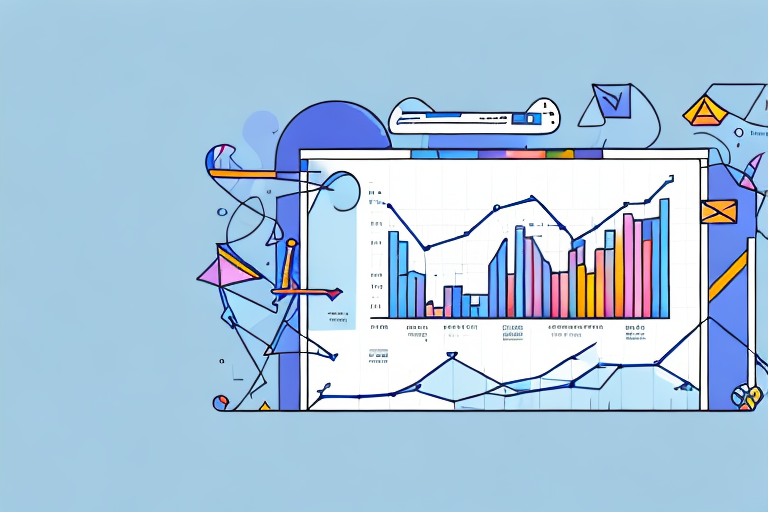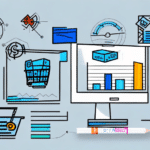Measuring Delivery Performance with Key Performance Indicators (KPIs)
In today's fast-paced business environment, effectively measuring delivery performance is crucial for maintaining customer satisfaction and achieving long-term success. Companies invest significant time and resources into planning, executing, and delivering their products or services. Ensuring a consistent, timely, and efficient delivery process is essential to fostering customer loyalty. One of the most effective methods to measure and enhance delivery performance is through the utilization of key performance indicators (KPIs).
Understanding Key Performance Indicators (KPIs)
What are KPIs?
Key Performance Indicators (KPIs) are quantifiable metrics that organizations use to evaluate their success in achieving specific business objectives. KPIs are designed to provide a clear and objective measure of performance, enabling businesses to track progress, identify areas for improvement, and make informed decisions. According to a Forbes article, effective KPIs are specific, measurable, achievable, relevant, and time-bound (SMART).
Choosing the Right KPIs for Your Business
Selecting the appropriate KPIs is critical for accurately measuring delivery performance. The chosen KPIs should align with the company’s strategic goals and focus on the most impactful aspects of the delivery process. Factors to consider include the level of granularity, data availability, and the ability to track metrics consistently. As highlighted by McKinsey & Company, aligning KPIs with business strategy ensures that the metrics drive meaningful improvements.
Common KPIs for Measuring Delivery Performance
Several KPIs are commonly used to assess delivery performance:
- Delivery Time: Measures the duration from order placement to delivery.
- Order Accuracy: The percentage of orders delivered correctly without errors.
- Delivery Cost: Total cost incurred in delivering products or services.
- Customer Satisfaction: Gauges how satisfied customers are with the delivery experience.
- On-Time Delivery: Percentage of orders delivered by the promised time.
Regularly tracking these KPIs allows businesses to identify strengths and areas needing improvement, ensuring efficient delivery operations.
Measuring Delivery Performance
The Importance of Measuring Delivery Performance
Measuring delivery performance is vital as it directly influences customer satisfaction, brand reputation, and revenue growth. According to a Bain & Company report, companies that excel in customer experience can achieve up to 4.5 times higher revenue growth than their competitors. Tracking delivery performance KPIs provides insights into whether the business is meeting customer expectations and where operational efficiencies can be enhanced.
Setting Realistic Targets for KPIs
Establishing achievable targets for KPIs is essential for maintaining motivation and ensuring continuous improvement. Targets should be SMART—specific, measurable, achievable, relevant, and time-bound. For instance, setting a target to increase on-time delivery rates by 5% over the next quarter provides a clear and attainable goal. Regularly reviewing and adjusting these targets based on performance data and market conditions ensures they remain relevant and challenging.
Tracking and Analyzing KPI Data
Effective tracking and analysis of KPI data enable businesses to identify trends, patterns, and anomalies in their delivery processes. Utilizing advanced analytics tools, such as Microsoft Power BI or Tableau, can enhance data visualization and provide actionable insights. Analyzing this data helps in pinpointing bottlenecks, optimizing routes, and improving overall delivery efficiency.
Understanding the Impact of KPIs on Your Business
KPIs have a significant impact on various aspects of a business, including operational efficiency, customer satisfaction, and profitability. By understanding how each KPI influences these areas, businesses can make informed decisions that drive growth and enhance performance. For example, improving order accuracy directly correlates with higher customer satisfaction and reduced return rates, ultimately boosting profitability.
Improving Delivery Performance
Tips for Improving Delivery Performance Based on KPI Data
Leveraging KPI data to enhance delivery performance involves a strategic approach:
- Identify Areas for Improvement: Analyze KPI data to pinpoint specific aspects of the delivery process that require enhancement.
- Create a Plan of Action: Develop targeted strategies to address identified issues, such as optimizing delivery routes or enhancing staff training.
- Implement Process Changes: Apply the planned changes and monitor their effectiveness through KPI tracking.
- Measure the Impact: Assess the impact of the implemented changes on KPIs to determine their success.
- Continue Monitoring: Maintain ongoing tracking and analysis to ensure sustained improvement.
Incorporating these steps ensures that delivery performance improvements are data-driven and sustainable.
Best Practices for Using KPIs to Measure Delivery Performance
Adhering to best practices maximizes the effectiveness of KPI utilization:
- Align KPIs with Business Goals: Ensure that KPIs support the overarching objectives of the organization.
- Set Realistic Targets: Establish achievable goals that motivate the team and drive progress.
- Regularly Track and Analyze Data: Consistent monitoring allows for timely adjustments and continuous improvement.
- Inform Decision-Making: Use KPI insights to guide strategic and operational decisions.
- Communicate Results: Share KPI outcomes with stakeholders to maintain transparency and accountability.
Implementing these best practices leads to a more effective and responsive delivery performance measurement system.
Top Tools and Software for Tracking KPIs in Delivery Management
Several tools and software solutions are available to assist businesses in tracking and managing KPIs for delivery performance:
- Microsoft Power BI: A robust analytics tool that offers interactive visualizations and business intelligence capabilities.
- Tableau: Known for its user-friendly interface and powerful data visualization features.
- Klipfolio: Provides real-time dashboards and analytics for monitoring KPIs.
- Domo: An integrated platform that offers data visualization, reporting, and collaboration tools.
- Sisense: Facilitates complex data analysis and visualization for comprehensive KPI tracking.
Selecting the right tool depends on the specific needs and scale of the business, but all these options provide robust features for effective KPI management.
The Future of Measuring Delivery Performance with KPIs
The landscape of delivery performance measurement is evolving with advancements in technology. Emerging technologies such as artificial intelligence (AI), machine learning, and the Internet of Things (IoT) are set to revolutionize how businesses track and optimize their delivery processes. According to a report by Gartner, AI-driven analytics will become integral in predictive delivery performance, allowing businesses to anticipate and mitigate potential disruptions proactively.
The integration of IoT devices enables real-time tracking and monitoring of delivery assets, providing granular visibility into the delivery process. This real-time data collection facilitates immediate response to issues, enhancing overall efficiency and customer satisfaction. As these technologies continue to mature, businesses will have access to more sophisticated tools for measuring and improving delivery performance, ensuring they remain competitive in an increasingly digital marketplace.




















